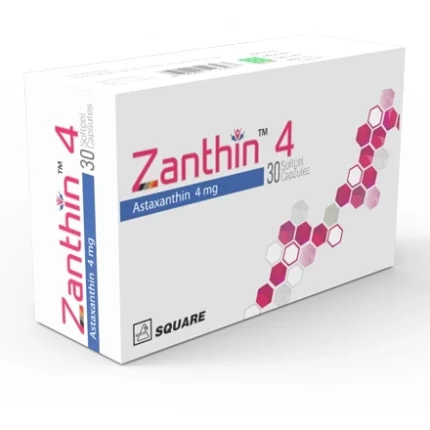Omidon 10
52.50৳ Strip
- Domperidone is a dopamine antagonist used to treat dyspeptic symptoms, including nausea, vomiting, and gastric discomfort.
- It enhances gastrointestinal motility, alleviating conditions related to delayed gastric emptying and gastroesophageal reflux.
- Suitable for both adults and children, Domperidone is typically taken before meals for optimal effect.
- Always consult a healthcare professional before use to ensure safety and effectiveness.
 Brand
Brand
|
Incepta Pharmaceuticals Ltd |
|---|---|
 Generics
Generics
|
Domperidone Maleate |
 Type
Type
|
Tablet |
Indications
Domperidone is indicated for the management of dyspeptic symptoms, often linked to delayed gastric emptying, gastroesophageal reflux, and esophagitis. Symptoms include:
- A sensation of fullness in the epigastric region
- Abdominal distension and discomfort
- Upper abdominal pain
- Eructation and flatulence
- Early satiety
- Nausea and vomiting
- Heartburn, with or without regurgitation of gastric contents
- Non-ulcer dyspepsia
It is also effective in treating acute nausea and vomiting caused by functional, organic, infectious, dietary origins, as well as those induced by radiotherapy, medications, or migraines.
In patients with Parkinson’s disease, it addresses nausea and vomiting induced by dopamine agonists.
Radiological Use: Enhances barium transit in follow-through radiological studies.
Always consult a registered healthcare professional before use.
Pharmacology
Domperidone acts as a dopamine antagonist, primarily blocking dopamine receptors in the Chemoreceptor Trigger Zone (CTZ) and stomach. Its gastroprokinetic effects arise from its ability to enhance gastrointestinal motility by inhibiting dopamine receptor activity. Due to limited penetration across the blood-brain barrier, Domperidone minimizes the risk of neurological and psychotropic side effects.
This medication normalizes motility and tone in the upper gastrointestinal tract, promotes gastric emptying, enhances peristalsis in the antrum and duodenum, and regulates pyloric contraction. Additionally, Domperidone increases esophageal peristalsis and improves lower esophageal sphincter pressure, helping to prevent gastric regurgitation.
Dosage & Administration
For optimal results, Domperidone should be taken 15-30 minutes before meals and, if necessary, before bedtime.
Recommended Oral Dosage:
- Adults: 10-20 mg (1-2 tablets or 10-20 ml suspension) every 6-8 hours. Maximum daily dose: 80 mg.
- Children: 2-4 ml suspension/10 kg body weight or 0.4-0.8 ml pediatric drops/10 kg body weight, every 6-8 hours.
In dyspeptic symptoms:
- Adults: 10-20 mg every 6-8 hours.
- Children: 0.2-0.4 mg/kg every 6-8 hours.
In acute conditions (nausea/vomiting):
- Adults: 20 mg every 6-8 hours.
- Children: 0.2-0.4 mg/kg every 6-8 hours (maximum treatment duration: 12 weeks).
Rectal Suppositories:
- Adults: 30-60 mg every 4-8 hours.
- Children: Maximum rectal dose of 30 mg daily for those weighing 10-25 kg.
Consult a registered healthcare professional for usage guidance.
Interactions
Concurrent use of anticholinergic medications may diminish the efficacy of Domperidone. Antacids and antisecretory drugs should not be taken simultaneously, as they may reduce oral bioavailability. Domperidone is primarily metabolized via CYP3A4, and co-administration with strong inhibitors of this enzyme can elevate plasma levels of Domperidone.
Consider potential interactions with neuroleptics, dopaminergic agonists (e.g., bromocriptine, L-dopa), and other medications.
Contraindications
Domperidone should not be used in individuals with known hypersensitivity to the drug, neonates, or in cases where gastrointestinal stimulation may pose risks, such as gastrointestinal bleeding or obstruction. It is also contraindicated in patients with prolactin-releasing pituitary tumors (prolactinoma).
Side Effects
Side effects are uncommon; transient intestinal cramps may occur. Extrapyramidal symptoms are rare in young children and very uncommon in adults. Should these arise, they typically resolve completely upon discontinuation of treatment. Domperidone may lead to increased plasma prolactin levels, occasionally resulting in neuroendocrine effects like galactorrhea or gynecomastia.
Pregnancy & Lactation
In animal studies, Domperidone did not exhibit teratogenic effects at high doses. However, it should only be used during the first trimester of pregnancy if deemed necessary. Although it is excreted in breast milk, levels are significantly lower than those in plasma, and nursing is generally not recommended unless benefits outweigh potential risks.
Precautions & Warnings
Exercise caution when administering Domperidone to children due to a higher risk of extrapyramidal reactions. Use in patients with liver impairment should be closely monitored.
Use in Special Populations:
- Infants: Administer only under strict medical supervision.
- Liver Disorders: Monitor closely due to high hepatic metabolism.
- Kidney Disorders: Adjust frequency for severe renal insufficiency, although single doses generally do not require adjustment.
Overdose Effects
Overdose symptoms may include drowsiness, disorientation, and extrapyramidal reactions, particularly in children. In cases of overdose, activated charcoal may be administered, and patients should be closely observed. Anticholinergic or antiparkinsonian medications may be used to manage extrapyramidal reactions.
Therapeutic Class
Motility Stimulants, Dopamine Antagonists, Prokinetic Drugs.
Storage Conditions
Store below 30°C, away from light and moisture. Keep out of reach of children.
Always seek guidance from a registered healthcare professional before starting any medication.













Reviews
There are no reviews yet.